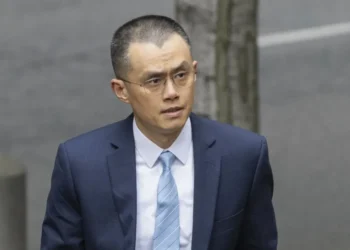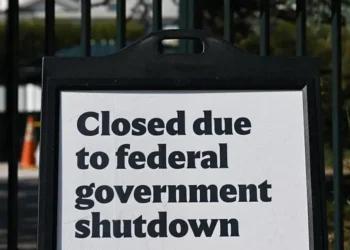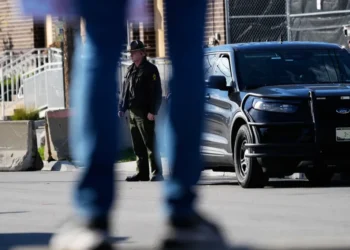G7 Stumbles on Unity as Trump Leaves Early, Talks on Ukraine and Iran Falter
Kananaskis, Alberta — The Group of Seven summit wrapped up with more questions than answers as six world leaders struggled to find common ground on key global crises—Russia’s war in Ukraine, the escalating Israel-Iran conflict, and global trade tensions—after U.S. President Donald Trump made an early exit.
While Canadian Prime Minister Mark Carney and leaders from the U.K., France, Germany, Italy, and Japan continued discussions through the summit’s final day, the absence of Trump loomed large. Ukrainian President Volodymyr Zelenskyy and NATO Secretary-General Mark Rutte joined the talks on Tuesday, hoping for clear commitments—particularly on Ukraine—but major agreements never materialized.
No Unified Stance on Ukraine
One of the summit’s most pressing challenges—Russia’s ongoing war in Ukraine—ended without a joint statement. Zelenskyy, who had been scheduled to meet with Trump (a meeting later scrapped), called for more support and said Ukraine was ready for peace talks and a ceasefire, but needed stronger pressure on Russia.
Behind the scenes, a senior Canadian official said the U.S. had resisted any joint declaration on Ukraine, reportedly to avoid undermining its diplomatic push for negotiations with Moscow. Although Canada later walked back that claim, the lack of a unified front was clear. Carney instead issued Canada’s own statement reaffirming support for a “secure and sovereign Ukraine” and announcing new economic sanctions on Russia.
Meanwhile, Trump defended his reluctance to join new sanctions, arguing that punishing Russia comes with “tremendous” costs to the U.S. He also blamed the Ukraine war on the 2014 G7 decision to expel Vladimir Putin over Crimea’s annexation—a stance at odds with his G7 peers.
Tensions in the Middle East Dominate the Agenda
The summit was also overshadowed by growing fears of a regional war in the Middle East. As Israeli airstrikes pounded Iran and Tehran fired back with missiles and drones, leaders scrambled to address the crisis.
Trump, before leaving, briefly joined the others in releasing a carefully worded joint statement calling for a ceasefire in Gaza and stressing that Iran “can never have a nuclear weapon.” French President Emmanuel Macron warned against any push for regime change in Iran, saying military action would only lead to more instability.
“I believe the greatest mistake today would be to pursue regime change in Iran through military means,” Macron said. “That would lead to chaos.”
Trade Frictions and Awkward Moments
Trade tensions also resurfaced, with Trump’s steep tariffs dominating side conversations. His trade team stayed behind in Canada to continue talks as he flew back to Washington. Trump has slapped 50% tariffs on steel and aluminum, a 25% tax on cars, and a 10% tariff on most imports—measures that have strained relationships with key allies. More hikes may be on the way after his self-imposed 90-day deadline for trade renegotiations ends July 9.
Despite the chilly atmosphere, Trump did share one bright moment with British Prime Minister Keir Starmer, finalizing a U.S.–U.K. trade framework first announced in May. But even that included a touch of awkwardness: as Trump waved around the signed agreement, he dropped the papers. Starmer quickly picked them up—explaining afterward that only he could safely approach Trump without alarming security.
“There were quite strict rules about who can get close to the president,” Starmer said. “It wouldn’t have been good for anyone else to step forward.”
Fractured Unity, Lingering Questions
With no major breakthroughs and a summit visibly lacking in unity, questions remain about the G7’s effectiveness in shaping global policy. Macron defended Carney’s leadership, saying it’s unrealistic to expect any host to resolve the world’s biggest problems in a single summit. “That would be unfair,” he said.
Carney himself downplayed Trump’s early departure, saying it was driven by the urgent crisis in the Middle East, not disagreements at the summit. “There was no problem,” he told reporters. “Mr. Trump felt it was better to be in Washington, and I can understand that.”
Still, the optics were hard to ignore: a world grappling with war, rising authoritarianism, and economic uncertainty—and a summit struggling to stay in sync without its most powerful member at the table.
“We did everything I had to do at the G7,” Trump said from Air Force One. But as the headlines and photo ops show, that “everything” may not have been enough.
Source: AP News – G7 leaders fail to reach ambitious joint agreements on key issues after Trump’s exit
This article was rewritten by JournosNews.com based on verified reporting from trusted sources. The content has been independently reviewed, fact-checked, and edited for accuracy, tone, and global readability in accordance with Google News standards.
Stay informed with JournosNews.com — your trusted source for verified global reporting and in-depth analysis. Follow us on Google News and BlueSky for real-time updates.
JournosNews.com follows Google News content standards with original reporting, verified sources, and global accessibility. Articles are fact-checked and edited for accuracy and neutrality.












